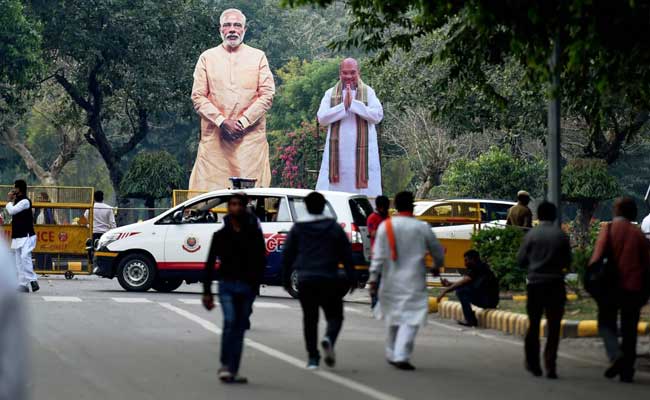Do you remember what PM Modi said at NITI Aayog’s Governing Council meeting? Well, the Election Commission now seems to echo the same. And since it has already been said by Modi, we can now expect it to be implemented without delay. The Election Commission has made it public that it will be fully equipped to conduct simultaneous elections to the Lok Sabha and State Assemblies by September 2018. If made a reality, this would certainly be a big feather in the cap of the BJP government. I would illustrate on how this would benefit our country, and also bring into perspective some hitches which can be expected. These hitches however, if taken care of, can make it a win-win situation for all. (except some)
Simultaneous elections would, to explain briefly, mean that you will go to your respective voting centre in the constituency and cast two separate votes, one for the Central government, in the form of voting for an MP candidate from your constituency, and one for the MLA, to represent your constituency in the state assembly.
A very important point to note is that, you will NOT vote for both the Central and State governments together. For example, in the state assembly, if you vote for a BJP MLA candidate, it does not imply that you will vote for the BJP at the Centre too, or vice versa. Such facetious rumours are being spread by some of the regional as well as national parties, for obvious political reasons, who are extremely scared that if, elections are conducted next year, the mandate will go against them. For example, if you are from Meghalaya, you can vote for the UDP-HSPDP alliance (reginal alliance of the state) and vote for the BJP at the centre. Just that, instead of one vote, two votes will be casted on the same day on two different EVM’s.
If implemented, the benefits of simultaneous elections would be almost immediately visible:
- A huge relief in terms of the expenditure incurred in conducting elections. The Lok Sabha elections cause a massive drain of cash, and equally so is the expenditure incurred in conducting the Assembly Polls of many states almost every year. In the Assembly Polls in 2012 of five states, UP, Punjab, Uttrakhand, Manipur and Goa, the expenditure was about 1000 Crore rupees. For the 2014 Lok Sabha elections, the expenditure was about 8000 Crore rupees! It is for you to decide, whether simultaneous polls would ease the pressure on our pockets or not?
- The administrative machinery will not be burdened with conducting elections 3-4 times a year, as is the current norm.
- The governments which are always under electoral obligations can focus on better governance rather than trying to continually secure their votebanks. Political leaders are almost always busy campaigning across the nation for the various polls, leaving their constituencies leaderless. With simultaneous elections, each government will get a good four-year solid term in office, assuming one year will be consumed in campaigning.
- The moral code of conduct, which politicians and parties must follow before elections, and which restricts a lot of economic activity, will not be applicable for at least 4 years to a government/party.
- The people of the country don’t necessarily need to be in a continuous election mode, hence giving psychological relief to the citizens. Considering that the campaigns usually witness high politicization and raised tempers.
- The Central and State governments will be more co-ordinated. Considering that simultaneous elections will have an impact on the Rajya Sabha elections too. The Rajya Sabha will be more balanced, allowing both the houses of Parliament to work in a synchronized manner.
There are few notable problems too, which will arise. The most important and serious of them being that nobody can place on record the fact that the elected state governments, or even the Central Government as a matter of fact, will complete their tenure. If the government fails to win the confidence of the house, by means of a no-confidence motion, then the state/nation will have to accept Governor’s/President rule respectively, till a new government is formed by a party/parties proving their majority or by means of a re-election. If a re-election were to occur, another problem would be that the tenures of the state and central governments would mismatch, again leading to separate polls.
If the Modi government can come up with a mechanism which can deal with this problem, and few others which may occur, this mega-plan of simultaneous elections is bound to be successful. Our democratic standards would indeed be raised, and we will live to see a stronger, stable and a certainly more politically balanced India.
